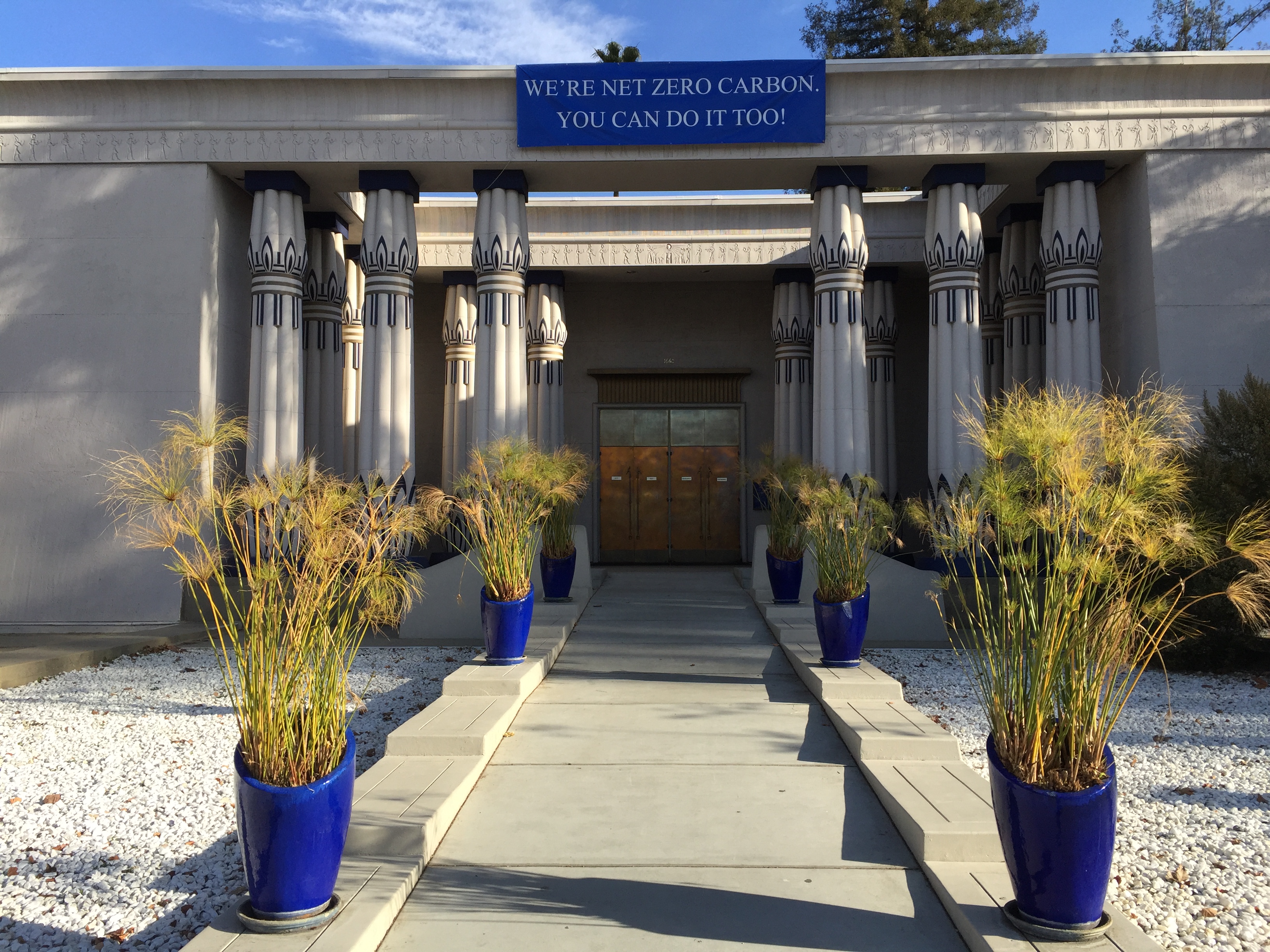As a hub of Silicon Valley, San Jose is often associated with startups, technology, and the so-called future.
But did you know that the city is also home to historical artifacts as ancient as the Pyramids at Giza?
Down a path of ram-headed, Sphinx-like statues and under a towering, temple-like structure held up by blue-and-white colonnades behind a set of golden doors, thousands of objects from one of the world’s most mesmerizing ancient civilizations are located at the Rosicrucian Egyptian Museum at 1660 Park Ave. in the city’s Rose Garden neighborhood.
The museum claims to house the largest collection of ancient Egyptian artifacts on display in western North America, from human mummies to a 3,500-year-old board game.
But why is this modern-day temple to ancient Egyptian culture located in San Jose of all places—and who are the Rosicrucians, exactly? The answers, like the question of how Queen Cleopatra lived and died, lie in history and mysticism. Here’s how you can visit.
Why Is the Rosicrucian Egyptian Museum in San Jose?
The answer is part philosophical and part pragmatic.
First, the museum’s founder, H. Spencer Lewis, also founded the nonprofit known as the Ancient Mystical Order Rosae Crucis (AMORC) in New York in 1915. However, the organization claims its roots stretch back to the mystery schools of ancient Egypt, and its members hold a strong affinity for all things ancient Egyptian as well as a mishmash of historical spiritual movements and traditions. While the group studies teachings related to everything from medieval alchemy to the Kabbalah, members maintain that the order is not a religion nor a cult, but a way to uncover universal truths and work on self-improvement. The group does not evangelize.
“It’s a philosophical organization,” said the Rosicrucian Egyptian Museum’s Executive Director Julie Scott, adding that members come from numerous religious backgrounds. “We study natural laws and the world around us. … The Rosicrucian teachings are available to anyone who wants to sincerely commit.”
In the early 20th century, Lewis was drawn not only to California’s free-thinking ways, Scott said, but also to land in San Jose, which was fairly cheap, and he moved the order’s headquarters to San Jose in 1927.
After the society acquired artifacts from excavations of the Egyptian city of Amarna in the 1920s, the idea for a museum was born. Artifact one was a Sekhmet lion goddess statue that held a place of honor at Lewis’ workstation. The collection ballooned after Lewis led a journey through Egypt in 1929 that encouraged the donation of additional artifacts and funds to his endeavor—and more acquisitions.
While mining tombs for non-archaeological purposes is no longer in vogue, the museum says that it maintains a dialogue with Egyptian authorities and will return any objects if asked.
“At first, he kept one artifact on his desk,” Scott said, “and he would say, ‘This is the Rosicrucian Egyptian Museum.’ And then after that, he would very astutely buy artifacts.”
In 1932, the order opened the Rosicrucian Egyptian Oriental Museum for its burgeoning collection and, by 1966, opened the facility that greets visitors today.
Sitting on 6.5 acres, the Rosicrucian Egyptian Museum now contains more than 4,000 ancient Egyptian artifacts and shares grounds with a research library, a peace garden modeled after those of Egypt’s 18th dynasty, an outdoor labyrinth, the order’s grand temple and a planetarium. The organization also plans to open a museum dedicated to alchemy in the next few years.
So What’s Inside?
Of the 4,000 objects, about 75% are on display, Scott told The Standard.
The collection encompasses everything from elaborately decorated sarcophagi and statues of royalty—including a rare life-size statue of Cleopatra—to objects that ancient Egyptians used in their daily lives. Think eye makeup containers, hair extensions and a 3,500-year-old version of Senet, a popular ancient Egyptian board game. The museum is also home to flints and arrowheads that date back hundreds of thousands of years and Sumerian clay tablets with the indentations of cuneiform, the earliest known form of human writing.
“One misconception about the museum is that it’s all replicas,” Scott said. “Everything on display behind glass is authentic. What we have is real and ancient.”
There is one notable replica: a tomb built into the guts of the building that offers a unique immersive experience. Modeled after crypts in Beni Hasan, Egypt, the reproduction invites visitors to pretend they’re exploring an ancient resting place. Visitors step through underground chambers with depictions of ancient Egyptian spiritual rituals.
Elsewhere, the collection includes five human mummies and a menagerie of 34 preserved animals, including several cats and two baby crocodiles dedicated to the god Sobek. A baboon mummy donation to the Egyptian god Thoth turned out to be a fake—an X-ray taken by National Geographic’s The Mummy Road Show in 2002 showed that the piece of faux taxidermy was built around a jar and made of wood, according to a sign nearby—but it’s still a favorite artifact among visitors.
At the end of the day, however, the museum wants to dispel modern-day perceptions that the ancient Egyptians were obsessed with only death and the afterlife.
“The mission is for our guests to experience people who lived in another time,” Scott said.
The Rosicrucian Egyptian Museum
📍1660 Park Ave., San Jose
🗓️ Fridays, 10 a.m.-5 p.m. | Saturdays and Sundays, 11 a.m.-6 p.m.
🔗 egyptianmuseum.org
🎟️ $10
